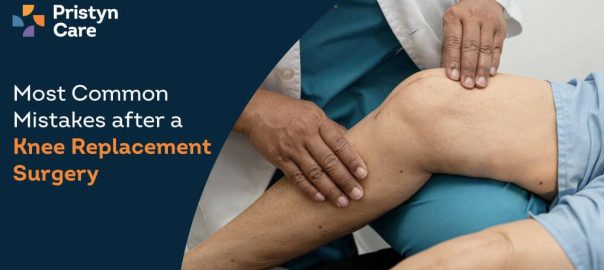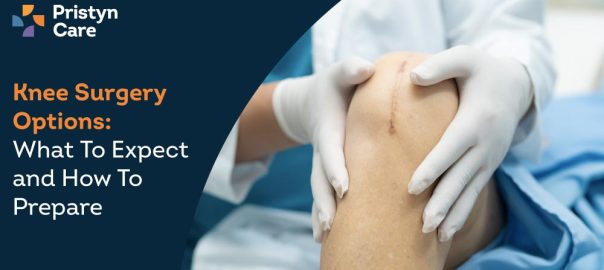![]() Views: 217
Views: 217
Revolutionizing Orthopedics: Robotic Knee Replacement Surgery
Dedicated Support at Every Step!
Our Doctors are available 24 hours a day, 7 days a week to help you!
Call Us0806-541-7703Table of Contents
Benefits of Robotic Knee Replacement:
- Enhanced Precision: Robotic-assisted knee replacement utilizes advanced imaging techniques and computer-guided systems to create a 3D model of the patient's knee joint. This allows surgeons to plan and execute the procedure with unmatched precision, resulting in a more customized fit of the implant.
- Personalized Treatment: Each individual's knee anatomy is unique, and robotic systems enable surgeons to tailor the surgical plan accordingly. This personalized approach ensures optimal implant positioning, leading to improved joint mechanics and potentially better long-term outcomes.
- Minimally Invasive Approach: Robotic knee replacement enables surgeons to perform the procedure through smaller incisions. This approach reduces tissue damage, postoperative pain, hospital stays, and facilitates a faster recovery compared to traditional open surgeries.
- Improved Implant Longevity: The precise alignment and balancing achieved through RKR can contribute to the longevity of the implant. Proper positioning can reduce wear and tear on the implant, resulting in increased durability and a decreased risk of revision surgeries.
No Cost EMI, Hassle-free Insurance Approval
Procedure for Robotic Knee Replacement:
- Preoperative Planning: Before the surgery, the patient undergoes a thorough assessment, including imaging tests like X-rays or CT scans. These images are used to create a virtual 3D model of the knee joint, allowing the surgeon to plan the procedure accurately.
- Surgical Mapping: Specialized software is employed to map the patient's knee anatomy based on the 3D model. This mapping helps the surgeon determine the optimal implant size, alignment, and placement for the patient.
- Robotic Assistance: During the surgery, the surgeon guides the robotic arm to perform precise bone cuts and ensure accurate implant positioning. The robotic system provides real-time feedback, assisting the surgeon in maintaining optimal alignment and balance of the knee joint.
- Implant Placement: Once the bone cuts are made, the joint surfaces are carefully prepared, and the implant is securely attached to the bone. The robotic system aids in confirming the correct alignment and balance of the knee before completing the procedure.
Factors Affecting Cost Increase of Robotic Knee Replacement:
While the cost of robotic knee replacement surgery can vary depending on several factors, some common aspects that may affect the overall cost include:
- Advanced Technology: The utilization of cutting-edge robotic systems and advanced imaging technologies can contribute to higher surgical costs.
- Surgeon's Expertise: Highly skilled surgeons with extensive experience in robotic knee replacement may charge higher fees.
- Hospital Facilities: The reputation and amenities of the hospital where the procedure is performed can impact the overall cost.
- Additional Services: The cost may also include preoperative assessments, postoperative rehabilitation, and follow-up consultations.
Ideal Candidate for Robotic Knee Replacement:
Robotic knee replacement is generally recommended for individuals who meet the following criteria:
- Severe Knee Pain and Dysfunction: Candidates experiencing chronic knee pain and functional limitations due to conditions such as osteoarthritis, rheumatoid arthritis, or post-traumatic arthritis may benefit from robotic knee replacement.
- Failed Conservative Treatments: Ideal candidates have typically exhausted non-surgical interventions, including physical therapy, pain medications, injections, and lifestyle modifications, without finding sufficient relief.
- Age and Overall Health: While age alone is not a determining factor, individuals in good overall health, regardless of age, are often considered suitable candidates for RKR A comprehensive evaluation of the patient's health and medical history is crucial to ensure the procedure's safety and success.
- Bone Quality and Joint Stability: Adequate bone quality and joint stability are important considerations for successful implantation. The surgeon will assess these factors through imaging tests to determine the candidacy for robotic knee replacement.
How to Reduce Pain During Knee Replacement Recovery:
Although pain is a natural part of the recovery process, there are several strategies to help manage and minimize discomfort after robotic knee replacement:
- Medication Management: Your healthcare team will prescribe appropriate pain medications to help control pain during the initial stages of recovery. Take the medications as directed and communicate any concerns or side effects to your medical provider.
- Physical Therapy: Engaging in a structured physical therapy program is crucial for a successful recovery. Therapists will guide you through exercises that strengthen the muscles surrounding the knee, promote flexibility, and aid in pain reduction.
- Cryotherapy and Heat Therapy: Utilizing ice packs or cold therapy machines can help reduce inflammation and alleviate pain. Heat therapy, such as warm compresses, can also provide relief.
- Elevation and Rest: Elevating your leg above heart level when resting can help reduce swelling and alleviate pain. Ensure you have a comfortable and supportive recovery environment.
- Transcutaneous Electrical Nerve Stimulation (TENS): TENS units use low-voltage electrical currents to target and stimulate nerves, potentially reducing pain signals. Consult with your healthcare provider to determine if TENS therapy is suitable for you.
Potential Side Effects of Robotic Knee Replacement:
While robotic knee replacement is generally safe and effective, there are potential side effects to be aware of:
- Infection: As with any surgical procedure, there is a risk of infection. Adhering to proper postoperative wound care protocols and taking prescribed antibiotics can help minimize this risk.
- Blood Clots: The immobility associated with recovery can increase the risk of blood clots. Your healthcare team may recommend blood thinners, compression stockings, or specific exercises to promote circulation and reduce this risk.
- Implant Complications: In rare cases, issues such as implant loosening, dislocation, or allergic reactions may occur. Regular follow-up appointments and adherence to postoperative care instructions can help identify and address any potential complications.
- Nerve or Blood Vessel Damage: While rare, nerve or blood vessel damage during surgery is a possibility. Skilled surgeons and the use of robotic systems aim to minimize such risks, but it's essential to discuss potential complications with your surgeon.
Traditional Knee Replacement vs Robotic Knee Replacement: A Comparative Analysis
Introduction: Knee replacement surgery is a common procedure performed to alleviate pain and restore mobility in individuals with severe knee conditions. Over the years, advancements in technology have given rise to robotic knee replacement as an alternative to traditional methods. In this article, we will compare traditional knee replacement with robotic knee replacement to understand the differences, benefits, and potential outcomes of each approach.
Surgical Procedure:
- Traditional Knee Replacement: In traditional knee replacement, the surgeon uses manual techniques and instruments to make bone cuts, position the implant, and ensure proper alignment and balance of the joint.
- Robotic Knee Replacement: It utilizes advanced imaging, computer-guided systems, and a robotic arm to assist the surgeon during the procedure. The robotic arm provides real-time feedback, enabling precise bone cuts, implant placement, and optimal alignment and balance.
Precision and Personalization:
- Traditional Knee Replacement: The accuracy of traditional knee replacement surgery heavily relies on the surgeon's expertise and experience. While they strive for precision, it may be challenging to achieve the same level of accuracy consistently.
- Robotic Knee Replacement: Robotic systems offer enhanced precision and personalization. Advanced imaging and planning software create a 3D model of the patient's knee, allowing surgeons to preoperatively plan the procedure. The robotic arm assists in executing the plan with greater accuracy, resulting in customized implant positioning and improved joint mechanics.
Implant Longevity:
- Traditional Knee Replacement: Proper alignment and balance of the implant are crucial for its long-term success. While skilled surgeons aim for optimal results, variations in manual techniques and human error may affect implant longevity.
- Robotic Knee Replacement: The precise positioning of the implant achieved through robotic assistance can potentially enhance implant longevity. Accurate alignment and optimal balance of the joint reduce wear and tear on the implant, potentially reducing the risk of revision surgeries.
Minimally Invasive Approach:
- Traditional Knee Replacement: Traditional knee replacement typically involves a larger incision and more extensive tissue disruption. This may result in increased pain, longer recovery times, and a higher risk of complications.
- Robotic Knee Replacement: Robotic systems allow for a minimally invasive approach, with smaller incisions and reduced tissue trauma. This approach often leads to less postoperative pain, shorter hospital stays, and faster recovery times.
Surgical Time and Complexity:
- Traditional Knee Replacement: The surgeon performs the procedure based on their training and experience, which can vary in terms of time and complexity. The accuracy of bone cuts, implant placement, and joint alignment relies on the surgeon's skill and expertise.
- Robotic Knee Replacement: Robotic systems aid the surgeon in precise planning and execution. While the setup and initial planning may require additional time, the robotic arm can assist in achieving accurate bone cuts, implant placement, and optimal joint alignment.
Robotic knee replacement offers several advantages over traditional knee replacement. The use of advanced technology, precision, personalization, minimally invasive approach, and potential for improved implant longevity make it an appealing option for patients and surgeons alike. However, it's important to consult with an experienced orthopedic surgeon to determine the most suitable approach based on individual circumstances and medical needs.
Types of Robotic-Assisted Knee Replacements
There are various types of robotic-assisted knee replacements that are used in orthopedic surgery. The specific type of robotic system used may vary depending on the hospital, surgeon, and the availability of the technology. Here are some of the commonly used robotic-assisted knee replacement systems:
- MAKO Robotic-Arm Assisted Surgery: MAKO is one of the most well-known and widely used robotic systems for knee replacements. It utilizes a combination of preoperative planning software, advanced imaging, and a robotic arm to assist the surgeon in performing precise bone cuts and implant placement. The system provides real-time feedback and enables accurate alignment and balancing of the knee joint.
- NAVIO Surgical System: The NAVIO system is another popular robotic-assisted platform used for knee replacement surgery. It incorporates image-free technology, allowing the surgeon to perform the procedure without the need for preoperative CT scans. Instead, the system uses a handheld instrument and computer navigation to guide the surgeon in achieving accurate bone cuts and implant positioning.
- ROSA Knee System: The ROSA Knee system combines robotics and intraoperative guidance to assist surgeons in knee replacement procedures. It utilizes a robotic arm and advanced software to create a 3D model of the patient's knee anatomy. The surgeon then uses this model to plan and execute the procedure with precision, ensuring optimal implant alignment and balance.
- Think Surgical TSolution One: The TSolution One system is a robotic platform that integrates preoperative planning, navigation, and robotic assistance for knee replacement surgery. It utilizes advanced imaging and computer-guided technology to create a virtual 3D model of the patient's knee joint. The surgeon can then use the system to perform accurate bone cuts and precise implant positioning.
Robotic Knee Replacement Recovery Process
The recovery process after robotic knee replacement surgery is crucial for achieving optimal outcomes. While each individual's recovery may vary, here is a general outline of what to expect during the rehabilitation period:
- Hospital Stay: After the surgery, you will typically stay in the hospital for a few days for monitoring and initial recovery. The medical team will closely monitor your pain levels, vital signs, and mobility.
- Pain Management: You will receive pain medications to help manage postoperative pain. It's important to take the medications as prescribed and communicate any discomfort or side effects to your healthcare team.
- Physical Therapy: Physical therapy plays a vital role in the recovery process. Soon after surgery, a physical therapist will work with you to initiate gentle exercises and mobility techniques. These exercises aim to improve range of motion, strengthen the surrounding muscles, and regain functional abilities.
- Weight-Bearing and Ambulation: Gradually, you will be encouraged to start bearing weight on the operated leg with the assistance of a walker or crutches. The physical therapist will guide you on proper weight-bearing techniques and help you gradually progress to walking without assistance.
- Rehabilitation Exercises: The physical therapist will prescribe specific exercises to help regain strength, flexibility, and stability in the knee joint. These exercises may include stretching, quadriceps and hamstring strengthening, and balance exercises. Following the therapist's instructions diligently is essential for a successful recovery.
- Assistive Devices: Depending on your progress and individual needs, you may need to use assistive devices like crutches, a walker, or a cane during the initial stages of recovery. The physical therapist will guide you on the appropriate use of these devices and gradually transition you to walking without assistance.
- Home Recovery: Once you are discharged from the hospital, you will continue your recovery at home. It is important to create a safe and comfortable environment that promotes healing and minimizes the risk of falls or injuries. Follow your surgeon's and physical therapist's instructions regarding wound care, activity limitations, and medication management.
- Follow-up Appointments: Regular follow-up appointments with your surgeon are crucial for monitoring your progress and addressing any concerns or complications that may arise. These appointments allow the surgeon to assess your healing, evaluate implant function, and make any necessary adjustments to your recovery plan.
- Gradual Return to Activities: As your recovery progresses, you will gradually increase your activity levels and return to daily activities and hobbies. Your surgeon and physical therapist will provide guidance on when it is safe to resume more demanding activities such as sports or recreational pursuits.
Average cost of robotic knee replacement in metro cities
The cost of robotic knee replacement surgery can vary across different metropolitan cities in India due to several factors, including the hospital or surgical facility, surgeon's expertise, choice of implant, and additional services provided. It's important to note that the following figures are approximate averages and can vary depending on individual circumstances and specific healthcare providers.
| City | Average Cost Range (INR) |
|---|---|
| Delhi | 3,50,000 - 6,00,000 |
| Mumbai | 4,00,000 - 7,50,000 |
| Bangalore | 3,50,000 - 6,50,000 |
| Chennai | 3,00,000 - 6,00,000 |
| Kolkata | 3,00,000 - 5,50,000 |
Please note that these figures are approximate averages and can vary based on factors such as the specific hospital or surgical facility, surgeon's expertise, choice of implant, and additional services provided. It is advisable to consult with healthcare providers in your chosen city to obtain accurate cost estimates based on your individual case and requirements. Additionally, checking with your insurance provider regarding coverage and reimbursement options can also provide valuable information regarding the overall cost of the procedure.
Robotic knee replacement surgery is a relatively new and advanced technology that has gained popularity in recent years. However, there are still some myths and misconceptions surrounding this procedure. Let's debunk some of the common myths associated with robotic knee replacement:
Myth 1: Robots perform the entire surgery independently.
Fact: It is not fully autonomous. The robotic system serves as a tool to assist the surgeon during the procedure. The surgeon remains in control and operates the robotic arm, guiding it based on preoperative planning and real-time feedback.
Myth 2: Robotic knee replacement is only for complex cases.
Fact: It can benefit a wide range of patients, including those with varying degrees of knee damage. It allows for precise implant positioning and alignment, leading to improved outcomes. It can be used in both simple and complex cases, depending on the surgeon's judgment.
Myth 3: Robotic knee replacement is riskier than traditional surgery.
Fact: Robotic knee replacement surgery is not inherently riskier than traditional methods. In fact, the use of robotics can potentially reduce the risk of complications by enhancing precision and accuracy during the procedure. As with any surgical procedure, risks and complications can occur, but the overall safety profile of robotic knee replacement is comparable to traditional approaches.
Myth 4: Robotic knee replacement is only for younger patients.
Fact: Robotic knee replacement is not limited to a specific age group. It can benefit patients of various ages who experience knee pain and mobility issues due to conditions such as osteoarthritis, rheumatoid arthritis, or post-traumatic arthritis. The suitability for robotic knee replacement is determined based on individual factors and the surgeon's assessment.
Myth 5: Robotic knee replacement guarantees a quicker recovery.
Fact: While robotic knee replacement can aid in precise implant positioning and potentially improve outcomes, the speed of recovery depends on various factors, including the patient's overall health, adherence to rehabilitation protocols, and the surgeon's guidance. Robotic assistance alone does not guarantee a quicker recovery, but it can contribute to better implant alignment and potentially improve long-term results.
Myth 6: Robotic knee replacement is significantly more expensive.
Fact: While robotic knee replacement may involve additional costs related to the technology and equipment, the overall cost can vary depending on multiple factors, including the hospital, surgeon, geographical location, and insurance coverage. It's important to consult with healthcare providers to understand the specific costs and potential financial implications.
It's crucial to have open and honest discussions with your surgeon to address any concerns or misconceptions you may have about robotic knee replacement. They can provide you with accurate information and guide you on the best treatment options based on your individual needs.










